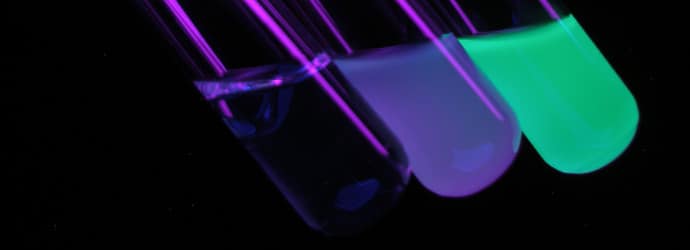Sepharose beads are porous, which gives them a high surface area for interaction with proteins and allows them to hold a lot of liquid. This is perfect for the application that they were originally designed for: purifying milligrams of protein in columns.
When immunoprecipitation (IP) – a small-scale technique for pulling specific proteins out of solution using bead-bound antibodies – was first developed, we naturally used sepharose beads, since that is what we were used to, and we had them in the lab. But for IP, the porous structure cases a problem since:
- The antibodies get trapped inside the pores and are difficult to wash away, so extensive washing is needed to reduce background levels
- The washing steps for IP are done in microfuge tubes and liquid exchange is done by pipetting, so it is easy to accidentally lose sample in the washes
- Diffusion is slow, so long incubation steps are required
- Long incubation and extensive washing cause mechanical and proteolytic damage the proteins
- All of these variables mean that the results are not as reproducible as we’d like
Improving the immunoprecipitation protocol using magnetic beads
Recently, there has been a growing trend towards using magnetic beads, rather than sepharose down for IP as they solve all of the problems listed above. Magnetic beads have a defined diameter, are non-porous and are, (you’ve guessed it) magnetic. This means that:
- There are no hidden surfaces for the antibodies to stick to so background, and the required number of washing steps, is reduced
- Diffusion is faster, so incubation steps are reduced
- Less washing and faster incubation times mean less chance of proteolytic damage
- A magnet can be used to separate the pellet and supernatant, which reduces the chance of losing sample and makes everything a lot faster and amenable to automation
- There are less variables so the process is very reproducible
So it looks like we should be switching to using magnetic beads for IP. What do you think?
Enjoying this article? Get hard-won lab wisdom like this delivered to your inbox 3x a week.

Join over 65,000 fellow researchers saving time, reducing stress, and seeing their experiments succeed. Unsubscribe anytime.
Next issue goes out tomorrow; don’t miss it.
Source: A rather excellent video called Immunoprecipitation On Bench Paper – A Surprising Shift, posted by LifeTechnologiesCorp on YouTube








